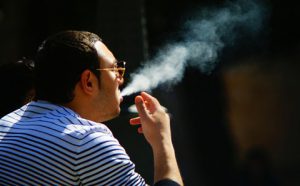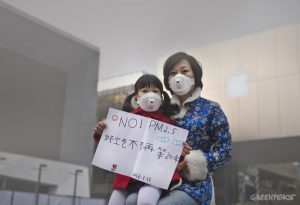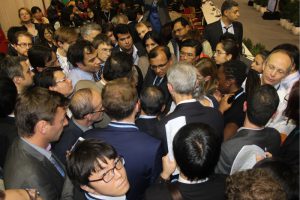After attempts to combat air pollution by quitting smoking and banning outdoor barbecues, officials are now looking to use artificial rainfall to bring back blue skies.
A recent document released by the China Meteorological Administration has said that by 2015 local weather authorities will be able to use weather manipulation – mainly artificial rainfall – to improve air quality when heavy smog occurs, according to the Beijing News.
The document, an implementation proposal for the Airborne Pollution Prevention and Control Action Plan, was produced as part of the Chinese government’s high profile campaign against air pollution. In late July, China announced a two-year 1.7 trillion yuan investment plan to tackle its worsening air pollution.
With cities in China experiencing the most frequent smog spells in five decades this year, the use of artificial rain to tackle air pollution by the authorities is hardly a surprise. Earlier this year, local authorities in Lanzhou, Chengdu and Wuhan all included artificial rainfall as a smog reduction option in their heavy air pollution contingency plan.
China’s weather authorities have long been using artificial rainfall to clear the skies, though arguably not merely for smog reduction. In August 2008, Beijing used artificial rainfall to ensure a dry night for the Olympic opening ceremony. Later in 2010, Shanghai local authorities contemplated using artificial rainfall to improve air quality during the World Expo trade convention.
According to statistics from China’s weather authorities, between 2002 and 2012 China used artificial rainfall to unlock nearly 490 billion tonnes of precipitation nationwide.
The proposed smog reduction measure was cautiously welcomed by some experts.
In an interview with the People’s Daily, Guo Xueliang from the China Meteorological Administration said artificial rainfall is a relatively effective way of reducing air pollution.
Liu Junfeng, a professor of the College of Urban and Environmental Sciences at Peking University, told chinadialogue that “whether it can work will depend mainly on the cost and effect of artificial rainfall.” However, Liu added, using artificial rainfall to alleviate smog “might be able to solve Beijing’s water shortage at the same time.”
However, the director of the environmental ministry’s official think tank perceived artificial rainfall as only a palliative. “When the smog is severe, artificial rainfall is like emergency treatment for a critically ill patient,” said Xia Guang. “It may temporarily alleviate air pollution. But if we want to be rid of smog, there are many aspects to aim our efforts at,” Xia was quoted as saying by Xinhua.
Nonetheless, the feasibility of using artificial rainfall to tackle air pollution has been questioned.
“It is almost impossible to reduce smog and improve air quality by means of using artificial rainfall under the current weather modification technologies,” Hong Yanchao, the deputy director of the National Consultation and Evaluation Committee for Weather Modification, told chinadialogue.
There are certain weather conditions that must be met before conducting artificial rainfall, such as humidity and ice crystal concentration, according to Hong. “Usually smog weather does not meet these conditions,” he added.





